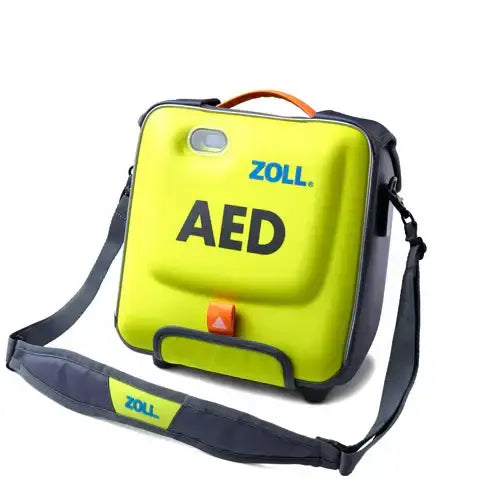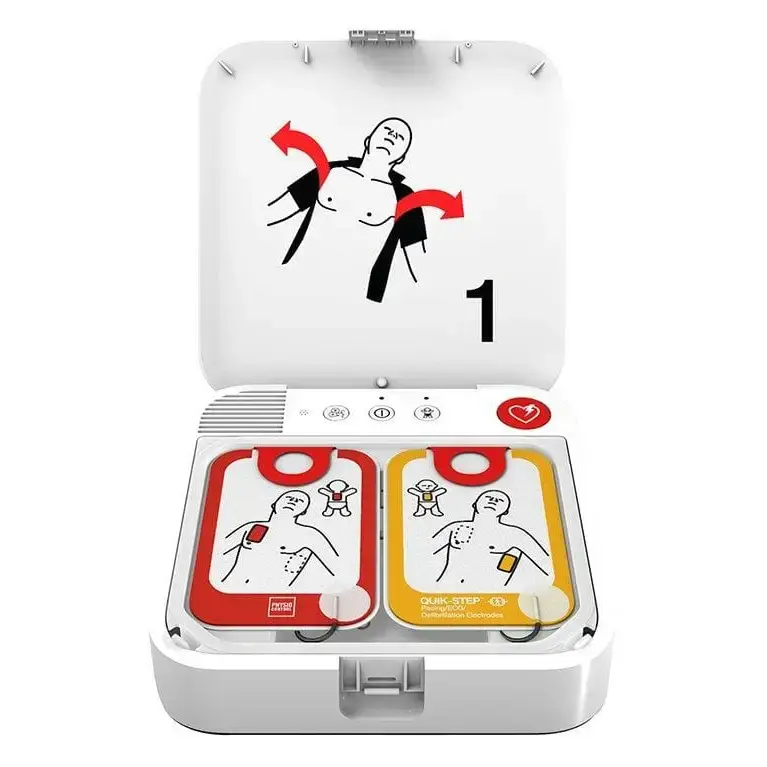AEDs Could Help Save Thousands of Lives each Year in Canada
Each year in Canada, thousands of people experience sudden cardiac arrest (SCA) outside of hospital settings. These medical emergencies require immediate intervention, and access to Automated External Defibrillators (AEDs) can make the difference between life and death. This article examines the potential impact of requiring AEDs to be as commonplace as fire extinguishers across Canada.
The Current State of Cardiac Arrest in Canada
Approximately 50,000 cardiac arrests occur in Canada annually, with about 85% happening outside of hospitals—in homes, workplaces, and public spaces. The survival rate for out-of-hospital cardiac arrests remains dismally low, at roughly 5-10% nationwide.
The reality is stark: for every minute that passes without defibrillation after cardiac arrest, survival chances decrease by 7-10%. After 10 minutes without intervention, survival becomes extremely rare. This timing challenge explains why, despite advances in emergency medical services, survival rates remain low.
The Life-Saving Potential of Universal AED Access
If AEDs were as ubiquitous as fire extinguishers in Canada, how many lives could be saved? Based on current research and statistical models, the estimates are significant:
Potential Lives Saved Annually
Studies suggest that immediate access to an AED could increase survival rates from the current 5-10% to approximately 50-70% when used within the first few minutes of cardiac arrest. Applied to Canada's statistics, this could translate to:
- Approximately 15,000-20,000 additional lives saved annually
- A reduction in neurological damage among survivors
- Decreased healthcare costs related to long-term care for cardiac arrest survivors with permanent impairments

https://aed.ca/products/zoll-aed-3
Barriers to Finding the Best AED Solution
Despite the clear benefits, several challenges exist when trying to locate an "AED near me" during an emergency:
- Availability: Unlike fire extinguishers, AEDs are not mandated in most buildings
- Visibility: Even when present, AEDs may not be clearly marked or accessible
- Awareness: Many Canadians don't know how to identify or use an AED
- Cost concerns: Organizations may hesitate to purchase what they perceive as expensive equipment
Economic Analysis: The Value of AED for Sale Programs
When examining the cost-effectiveness of widespread AED deployment, research indicates that the investment is justified:
- A quality AED in Canada typically costs between $2,000-$3,000
- The cost per life saved through public access defibrillation programs ranges from $30,000-$100,000
- By comparison, other accepted medical interventions often cost over $50,000 per quality-adjusted life year
This makes widespread AED deployment comparable to or more cost-effective than many established medical practices. AED defib devices represent a relatively small investment with substantial returns in lives saved.
Successful Models: AED Canada Programs Making a Difference
Several Canadian communities have already implemented comprehensive public access defibrillation programs:
In Ontario's Heart Safe Communities program, strategic placement of AEDs in high-traffic areas has demonstrated a 30% increase in survival rates in communities with comprehensive coverage.
Similarly, Manitoba's implementation of AEDs in all public buildings resulted in a documented increase in survival from 3% to nearly 18% in the initial years of the program.

https://aed.ca/products/stryker-physio-cr2-semi-auto-english-wifi
The Path Forward: Making AEDs as Common as Fire Extinguishers
To achieve the full life-saving potential, Canada would need to:
- Implement legislation requiring AEDs in all buildings, similar to fire extinguisher requirements
- Create standardized signage and placement protocols to enhance visibility
- Develop public awareness campaigns focusing on recognizing and using AEDs
- Establish maintenance programs to ensure all devices remain functional
Conclusion
The evidence suggests that requiring AEDs to be as common as fire extinguishers throughout Canada could save thousands of lives annually. The best AED is always the one that's readily available in an emergency. As technology improves and costs decrease, the case for universal AED placement becomes increasingly compelling.
For individuals or organizations considering an AED for sale, remember that this investment isn't merely about compliance—it represents the potential to save a life when minutes matter most. The question isn't whether Canada can afford to place AEDs everywhere; rather, it's whether we can afford not to. Contact https://aed.ca/ for more information.






